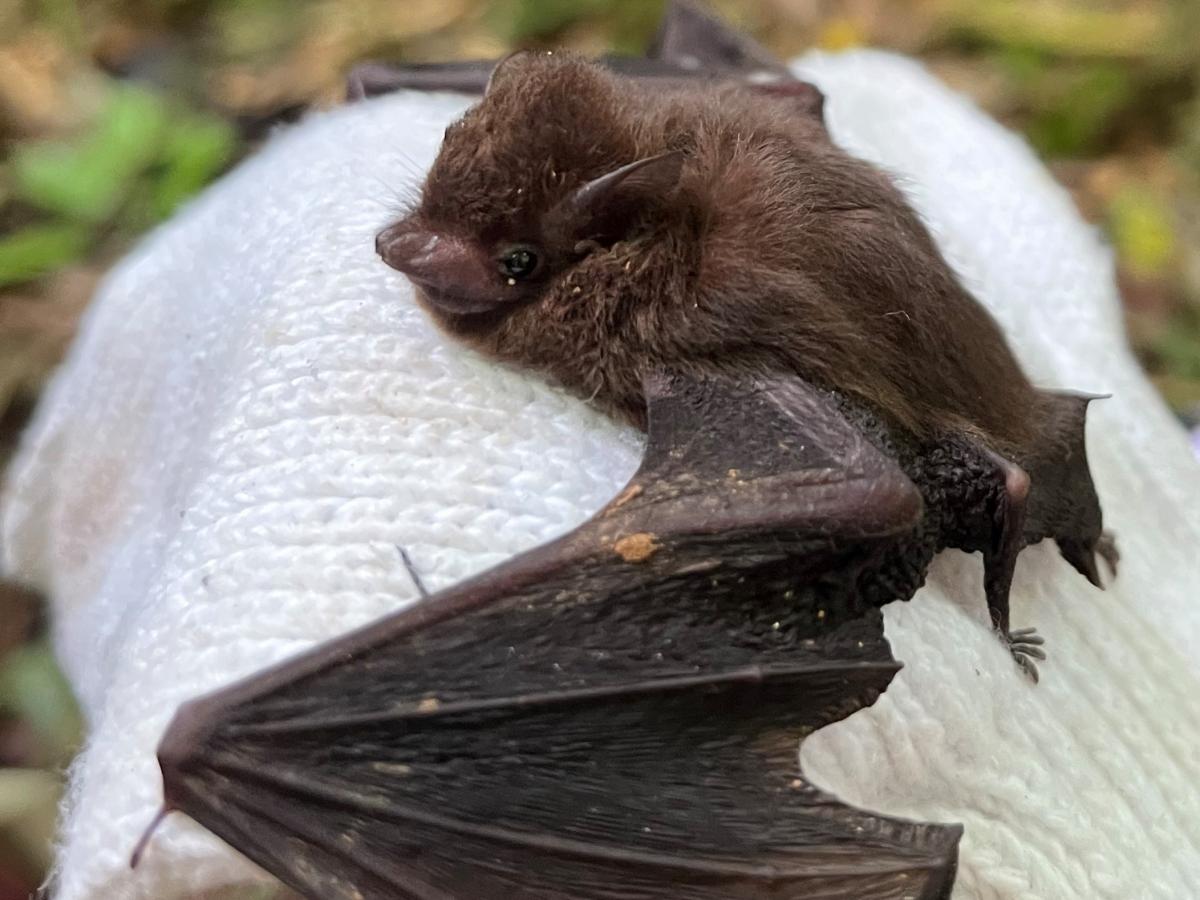A cave containing thousands of endangered Pacific Sheath-tailed bats has been discovered on Vanua Balavu, an island on the remote Lau archipelago in Fiji.
It was previously thought the Pacific Sheath-tailed bat population numbered in the hundreds, but the joint expedition involving the University of Adelaide, the Australian Museum Research Institute, and Conservation International found an estimated 2,000–3,000 bats.
University of Adelaide PhD candidate, Siteri Tikoca, said the Vanua Balavu discovery has important implications for conservation of the Pacific Sheath-tailed bats species.
“Discoveries this striking for an endangered species are rare and present a more accurate foundation for conservation planning,” said Ms Tikoca.
“They provide researchers with valuable information about this habitat, behaviour, and population size. It is not just about recording an existence – but we must take steps to protect this site and this species before it is too late.”
Professor Kristofer Helgen, Chief Scientist and Director of the Australian Museum Research Institute, who was part of the expedition, agreed it was a significant discovery.
“We have found what we now believe is the biggest population and roost for this species in Fiji and the region,” said Professor Helgen.
“The size of the roost found, numbering in thousands, gives us a remarkable insight into the potential population size and distribution of the bats, which may be larger and more spread out than previously thought.
“The virtual extinction from other regions of the Pacific makes this new roost in Fiji a monumental find and the only stronghold for the species’ conservation in the region.”
“It was a great discovery and the first accounts of the bats on Vana Balavu and one of the biggest populations of the species in the Pacific. We were utterly delighted – and one of the highlights of my career.”Associate Professor Wayne Boardman
A roost of the subspecies Emballonura semicaudata semicaudata was found on Taveuni in 2018, with a reported 2,000 bats, but numbers appeared to have dropped to only a couple of hundred by 2019.
Although the number of bats discovered is significant, University of Adelaide Associate Professor, Wayne Boardman, who was part of the Fiji expedition, said it is not enough to remove the species from the endangered list.
“The numbers are still precarious – it just gives us more hope that the population is in a slightly healthier position than it was before,” he said.
“It was a great discovery and the first accounts of the bats on Vana Balavu and one of the biggest populations of the species in the Pacific. We were utterly delighted – and one of the highlights of my career.”
Conservation International, which led the expedition, said more joint research missions like this are necessary to further conservation efforts.
“Persistent research, exploration, and conservation efforts are essential to discover the presence of endangered species such as this, hidden in our biodiversity. It’s these relentless pursuits that enable us to redefine and enhance our strategies for preservation,” said Conservation International Senior Director Fiji Program and Regional Fisheries, Mere Lakeba.
Media contact:
Associate Professor Wayne Boardman, School of Animal and Veterinary Science, The University of Adelaide, Phone: +61 0467 726 176, Email: wayne.boardman@adelaide.edu.au
Siteri Tikoca, PHD candidate, School of Animal and Veterinary Science, The University of Adelaide, Phone:+61 0415 123 737,
Email: adisiteri.tikoca@adelaide.edu.au
Professor Kristofer Helgen, Chief Scientist and Director, Australian Museum Research Institute, Phone: +61 2 9320 6237, Email: kris.helgen@australian.museum
Johnny von Einem, Media Coordinator, The University of Adelaide. Mobile: +61 0430 476 300, Email: johnny.voneinem@adelaide.edu.au



